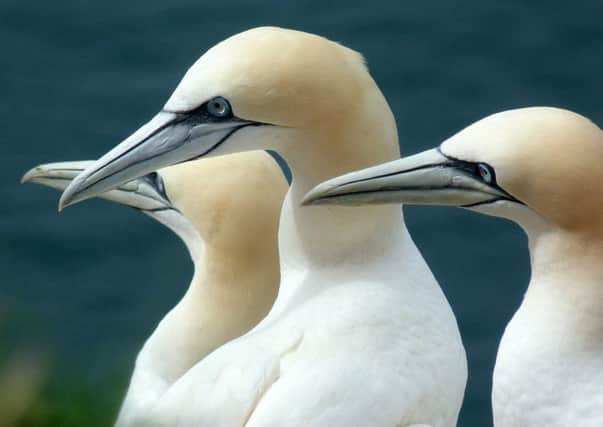Phil Taylor: Sea protection areas will help save birdlife


Places like Bass Rock and the cliffs of St Abbs fill up with a suite of stunning seabirds, each filling a unique niche on the noisy colonies. Guillemots turn the cliffs Dalmatian as they queue up on precocious ledges, puffins favour some safety underground and form huge warrens, while gannets settle on anything they can find and defend it fiercely.
Among this vast seabird invasion we also see the arrival of seaducks and divers. Huge rafts of eiders form in the Firth of Forth for courtship and mating, and divers loon and breed along our sealochs making amazing evening spectacles. Even through the winter some of these birds still fill up our coasts. These birds characterise Scotland’s seas, they play a central role in our marine environment. Our seas are also internationally important for them - for example, the Bass Rock is the world’s largest gannet colony.
Advertisement
Hide AdAdvertisement
Hide AdUnfortunately, though, many seabirds are in decline and have been for decades. Since about 2000, we have seen a sharp drop in the numbers of kittiwakes, guillemots, Arctic terns and Arctic skua breeding along our coasts. Last year we also saw puffins moved up to ‘red’ on the British Birds of Conservation Concern list.
The reasons for these changes are complex, but appear to be related to the warming oceans which negatively affect the plankton communities, in turn affecting the fish communities. This ultimately results in seabird parents not being able to feed their chicks.
Clearly work to mitigate further warming is needed, and RSPB Scotland is investing a great deal into making progress with green energy and transport to combat climate change. However, in the short term, and in the local waters most important for these birds, something else is needed.
Over the past few years RSPB Scotland has been working with the Scottish Government to identify and protect the most important parts of our seas and last month the government took an important stride forward.
Advertisement
Hide AdAdvertisement
Hide AdThey proposed ten areas including Scapa Flow, the Sound of Gigha and the Ythan Estuary for official formal protection. A public consultation is now open to get your views about whether they need to be protected.
This is a welcome move and it shows significant leadership from the Scottish Government in taking responsibility for this amazing part of our natural history. We, at RSPB Scotland, will be responding to this consultation to ask that all ten sites are promptly designated and we would love it if you could support this call too. You can do so easily, by following the link at the bottom of this article to our marine e-action and add your voice to the cause.
The ten areas which have been put forward for formal protection are extremely important. However, they are still only a small selection of those we know need protecting. There are five other areas in particular, including the Firth of Forth, which have not been included in this consultation.
To make real progress we need a coherent network of protection for our seabirds and marine life, but we believe this consultation is a brilliant first step in achieving that.
Advertisement
Hide AdAdvertisement
Hide AdOur seabirds will soon be finishing their breeding cycle, with many thousands of adults and chicks heading out into the seas to warmer climes for winter. Many of the chicks will not return for a few years yet, I hope when they do come back to our shores, we can offer them a safer, healthier and better protected home.
Phil Taylor is RSPB Scotland Marine Policy Officer. Join RSPB Scotland’s call for action here